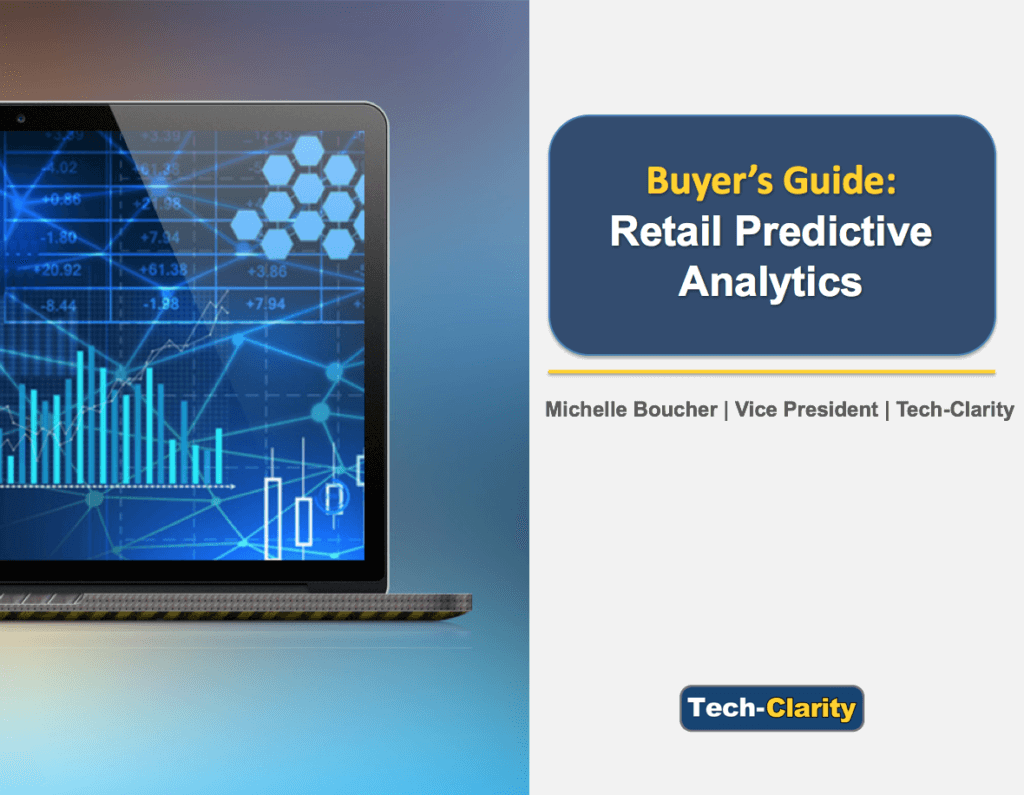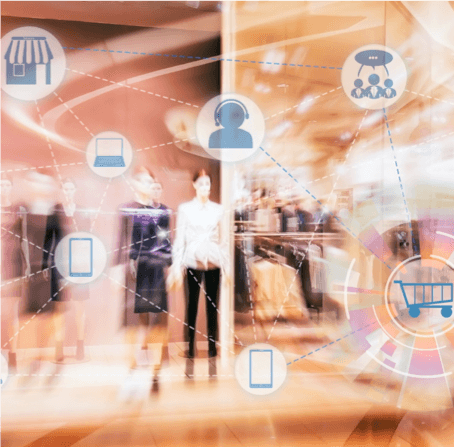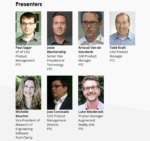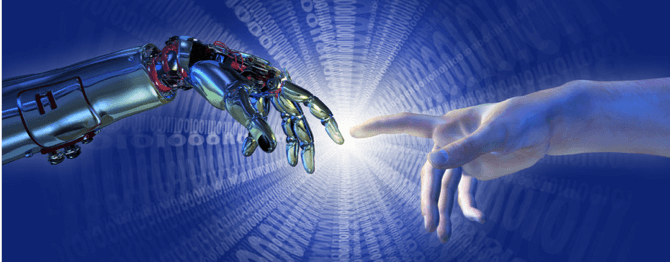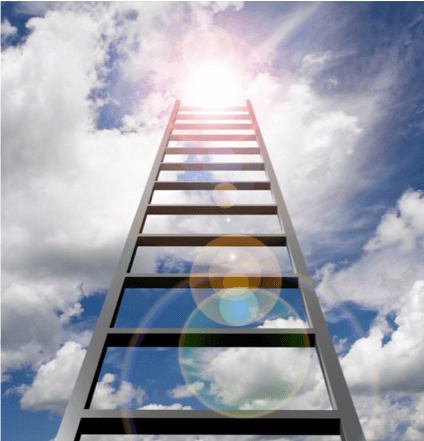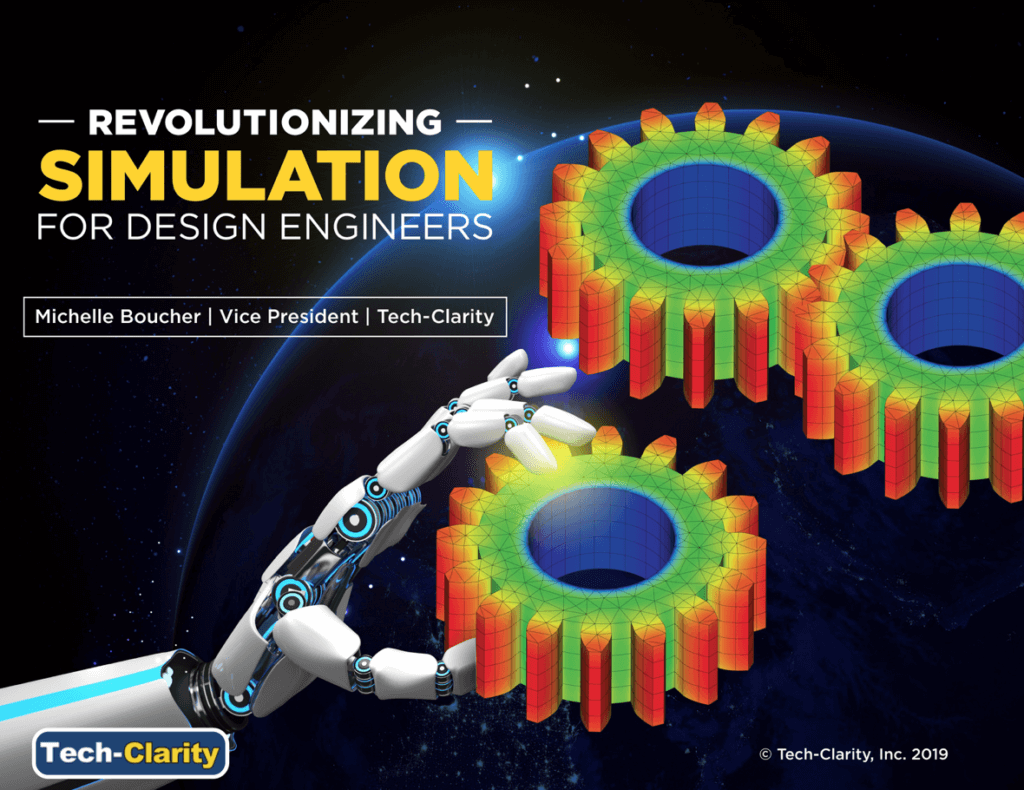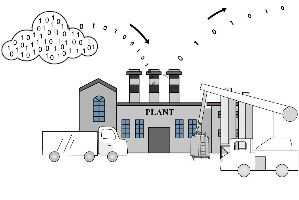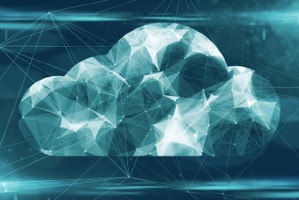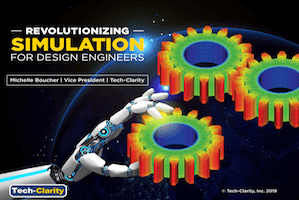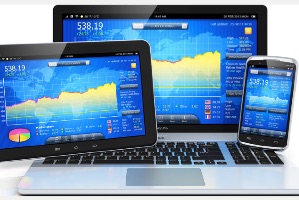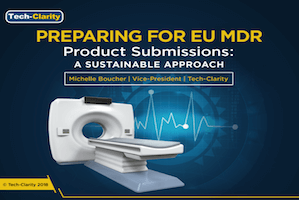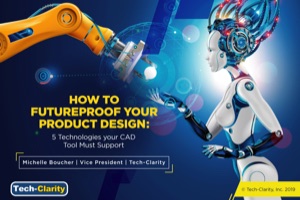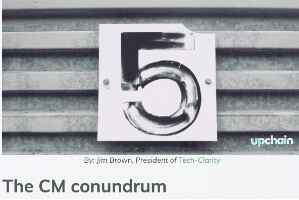Imagine what you could do if you could get almost a third of your time back? In a guest post on the Sodius Willert blog, Michelle Boucher shares research on how much engineering time is wasted on non-value added work and explains what you can do. Focus on the Work You Enjoy As an engineer,…
- Determine Your Business Needs Upfront
- Be Open to Change
- Keep the Focus on Customers
- Consider Vision and Future Needs
- Keep it Simple
- Automate Tedious Workflows
- Manage Scope
- Manage the Role of Team Members
- Overcome the Resistance to Change
- Provide Training
- Establish Success Factors
By following these ten recommendations, your company will be better positioned to successfully adopt technology and realize the expected ROI even faster.
*This summary is an abbreviated version of the eBook and does not contain the full content. A link to download the full eBook is available above.
If you have difficulty obtaining a copy of the research, please contact us using the “Contact” link below.
[post_title] => Ten Practices to Successfully Implement Technology (eBook) [post_excerpt] => [post_status] => publish [comment_status] => open [ping_status] => open [post_password] => [post_name] => ten-practices-to-successfully-implement-technology-ebook [to_ping] => [pinged] => [post_modified] => 2022-11-14 22:28:16 [post_modified_gmt] => 2022-11-15 03:28:16 [post_content_filtered] => [post_parent] => 0 [guid] => https://tech-clarity.com/?p=7580 [menu_order] => 0 [post_type] => post [post_mime_type] => [comment_count] => 0 [filter] => raw ) [5] => WP_Post Object ( [ID] => 7670 [post_author] => 2 [post_date] => 2019-04-01 09:44:21 [post_date_gmt] => 2019-04-01 13:44:21 [post_content] => How have manufacturers' opinions on using the cloud to support product innovation, product development, and engineering changed? How does that impact cloud adoption? Read the guest post in full in the Digital Transformation section of the Siemens PLM Community blog. Jim Brown recently shared a guest post on the Siemens' blog offering our experience on cloud adoption and starts a discussion about the variety of benefits that engineering software on the cloud offers. The post includes information from our prior research on using cloud for PLM, including this flowchart for companies to use when considering their cloud strategy. Times have changed. We've seen a shift from companies questioning if they should use the cloud to asking "why not?" use the cloud. Many viewed slower cloud adoption for PLM and other engineering solutions as a reluctance to put IP in the cloud, but our research and experience point to another reason. The solutions available on the cloud versus more traditional deployments simply did not offer equivalent capabilities. Now, we're seeing a different mindset.
Our conclusion is that the appetite for cloud solutions is increasing. At the same time, options are expanding to include more traditional solutions, along with their deep functionality, in a cloud offering. It’s time for more companies to take a look.
[post_title] => Why Not Adopt Cloud for Product Innovation and Engineering? (guest post)
[post_excerpt] =>
[post_status] => publish
[comment_status] => open
[ping_status] => open
[post_password] =>
[post_name] => cloud-adoption
[to_ping] =>
[pinged] =>
[post_modified] => 2022-11-14 22:25:36
[post_modified_gmt] => 2022-11-15 03:25:36
[post_content_filtered] =>
[post_parent] => 0
[guid] => https://tech-clarity.com/?p=7670
[menu_order] => 0
[post_type] => post
[post_mime_type] =>
[comment_count] => 0
[filter] => raw
)
[6] => WP_Post Object
(
[ID] => 7590
[post_author] => 2572
[post_date] => 2019-03-26 23:07:40
[post_date_gmt] => 2019-03-27 03:07:40
[post_content] =>
Times have changed. We've seen a shift from companies questioning if they should use the cloud to asking "why not?" use the cloud. Many viewed slower cloud adoption for PLM and other engineering solutions as a reluctance to put IP in the cloud, but our research and experience point to another reason. The solutions available on the cloud versus more traditional deployments simply did not offer equivalent capabilities. Now, we're seeing a different mindset.
Our conclusion is that the appetite for cloud solutions is increasing. At the same time, options are expanding to include more traditional solutions, along with their deep functionality, in a cloud offering. It’s time for more companies to take a look.
[post_title] => Why Not Adopt Cloud for Product Innovation and Engineering? (guest post)
[post_excerpt] =>
[post_status] => publish
[comment_status] => open
[ping_status] => open
[post_password] =>
[post_name] => cloud-adoption
[to_ping] =>
[pinged] =>
[post_modified] => 2022-11-14 22:25:36
[post_modified_gmt] => 2022-11-15 03:25:36
[post_content_filtered] =>
[post_parent] => 0
[guid] => https://tech-clarity.com/?p=7670
[menu_order] => 0
[post_type] => post
[post_mime_type] =>
[comment_count] => 0
[filter] => raw
)
[6] => WP_Post Object
(
[ID] => 7590
[post_author] => 2572
[post_date] => 2019-03-26 23:07:40
[post_date_gmt] => 2019-03-27 03:07:40
[post_content] =>
How do you empower engineers to design the best products possible?
Research from Tech-Clarity’s Revolutionizing Simulation For Design Engineers research report finds that design engineers lack confidence in design decisions 28% of the time. The research identifies the most common ways engineers deal with this uncertainty, its impact, and how to improve confidence. This research study, based on a survey of 195 companies, examines the design process and identifies top challenges that hold engineers back. The report reveals how to empower engineers with insight to improve product quality, lower cost, and accelerate time-to-market, all while developing more innovative products and the role that CAE can play.
Please enjoy the summary* below.
For the full research report, please visit our sponsor PTC (free of charge, registration required).
ENGINEERING DECISIONS CAN MAKE OR BREAK YOUR PRODUCTS
How do you empower engineers to design the best products possible?
Engineers want to design great products. Unfortunately, factors like increasing product complexity, competing design criteria, and knowing how design decisions impact other parts of the design make it hard. On top of this, ever-shrinking timelines mean engineers have their work cut out for them. Yet, exceptional engineering has become critical to success in today’s competitive global market.
WHAT’S MOST IMPORTANT FOR YOUR PRODUCT’S MARKET SUCCESS?
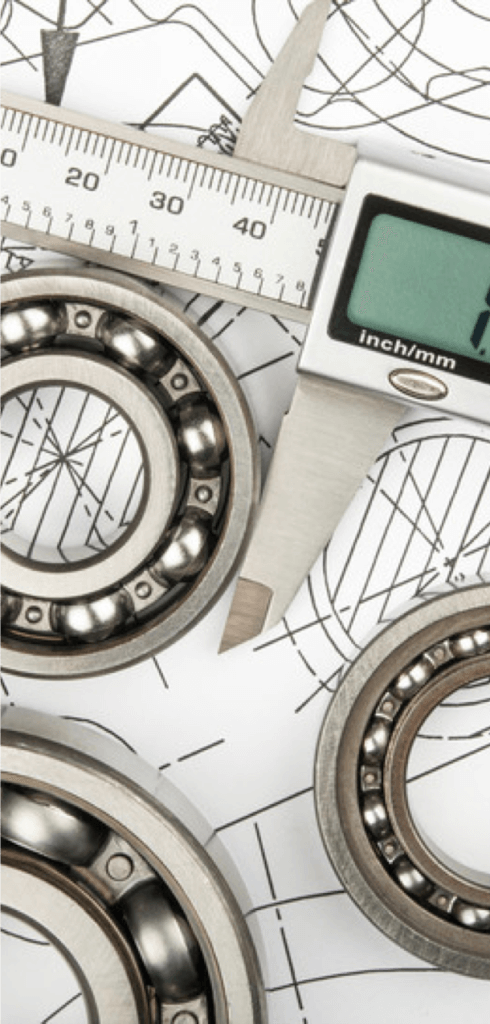
Product Quality
As companies face mounting pressure from global competitors, engineering criteria have become essential to competitively differentiate products. In fact, 80% of survey respondents believe that product quality is the most important product attribute to keep products competitive (see graph). Reliability and cost come next. This indicates customers have high expectations for quality and durability but don’t want to overpay. To be successful, companies should balance these criteria.
Engineering Decisions Are Critical – and Not Easy
Requirements for quality, reliability, and cost often conflict so balancing them is no small feat. Unfortunately, product complexity makes it hard for engineers to know the full impact of each design decision. Indeed, 76% of survey respondents rate design decisions that impact product competitiveness as ‘somewhat hard’ to ‘extremely difficult.’ This leads many engineers to overengineer, which unfortunately drives up cost.
Companies who can make this decision process easier will have an advantage.

RECOMMENDATIONS TO IMPROVE ENGINEERING DECISIONS
To help improve engineering decisions, Tech-Clarity offers the following recommendations:
- Empower design engineers with simulation tools to help guide their decisions.
- Use simulation as early as possible during concept and design.
- Rely on simulation as a design tool to optimize the design and provide directional guidance.
- Consider new approaches to simulation that are tailored for design engineers and make setting up an analysis easier.
- Look for a simulation solution that can offer instant results.
*This summary is an abbreviated version of the report and does not contain the full content. A link to download the full report is available above.
If you have difficulty obtaining a copy of the research, please contact us using the “Contact” link below.
[post_title] => Revolutionizing Simulation For Design Engineers [post_excerpt] => [post_status] => publish [comment_status] => open [ping_status] => open [post_password] => [post_name] => revolutionizing-simulation-design-engineers [to_ping] => [pinged] => [post_modified] => 2024-01-20 00:23:15 [post_modified_gmt] => 2024-01-20 05:23:15 [post_content_filtered] => [post_parent] => 0 [guid] => https://tech-clarity.com/?p=7590 [menu_order] => 0 [post_type] => post [post_mime_type] => [comment_count] => 0 [filter] => raw ) [7] => WP_Post Object ( [ID] => 7596 [post_author] => 2 [post_date] => 2019-03-26 11:32:12 [post_date_gmt] => 2019-03-26 15:32:12 [post_content] =>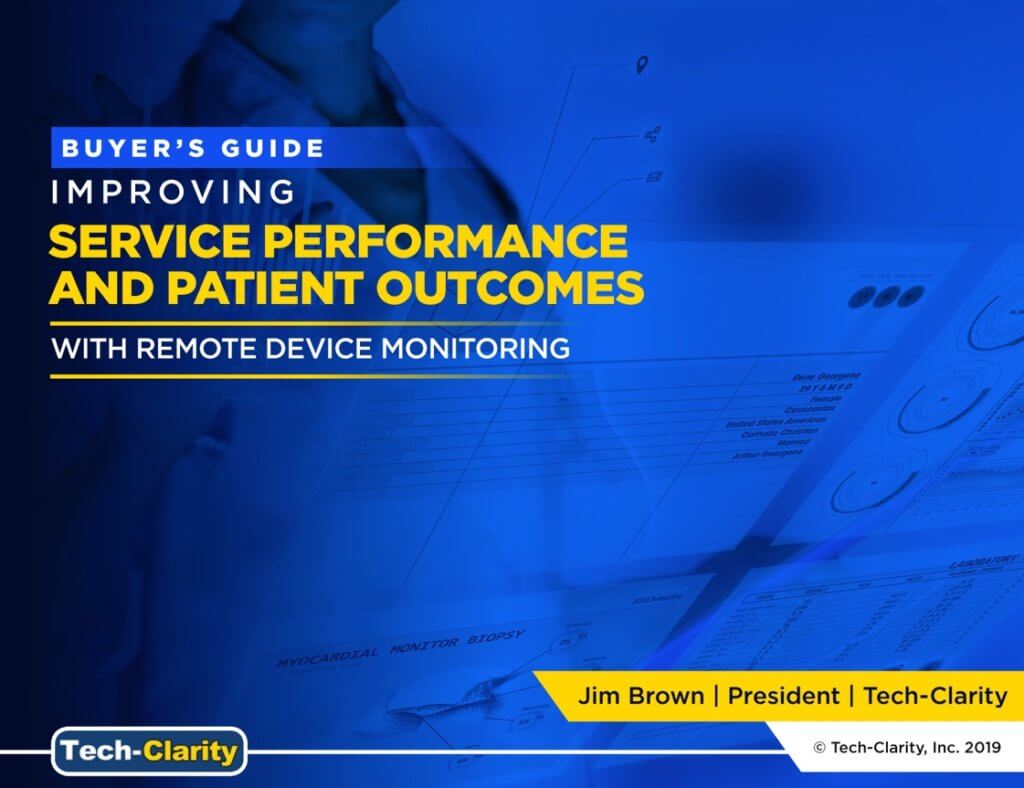
What should Life Sciences companies look for in a solution to help them simultaneously improve profitability and patient outcomes using remote device monitoring via the IoT?
Our new Improving Service Performance and Patient Outcomes with Remote Monitoring Buyer's Guide helps Life Sciences companies understand the business and social value of monitoring equipment with the IoT. It then offers evaluation criteria for companies to use as requirements to select a solution to achieve that value. The research also shares the experience of Varian Medical Systems and how they've used the IoT to drive improved service and customer relationships.
Please enjoy the summary below. For the full report, please visit our sponsor PTC (no charge, registration required).
Life Sciences Companies are Dramatically Improving Service by Digitalizing
Digitalization is changing the way innovative medical device, biotech, and related companies provide value and drive profitability. Research shows that one of the most compelling digital transformation opportunities is to revolutionize service, specifically:
- Deloitte finds1 that predictive maintenance can increase uptime and availability by 10-20 percent and reduce overall maintenance costs 5-10 percent
- Tech-Clarity’s Michelle Boucher shares2 that service is critical, that medical device downtime can impact lives, and that predictive maintenance can offer a significant advantage to minimize patient impact
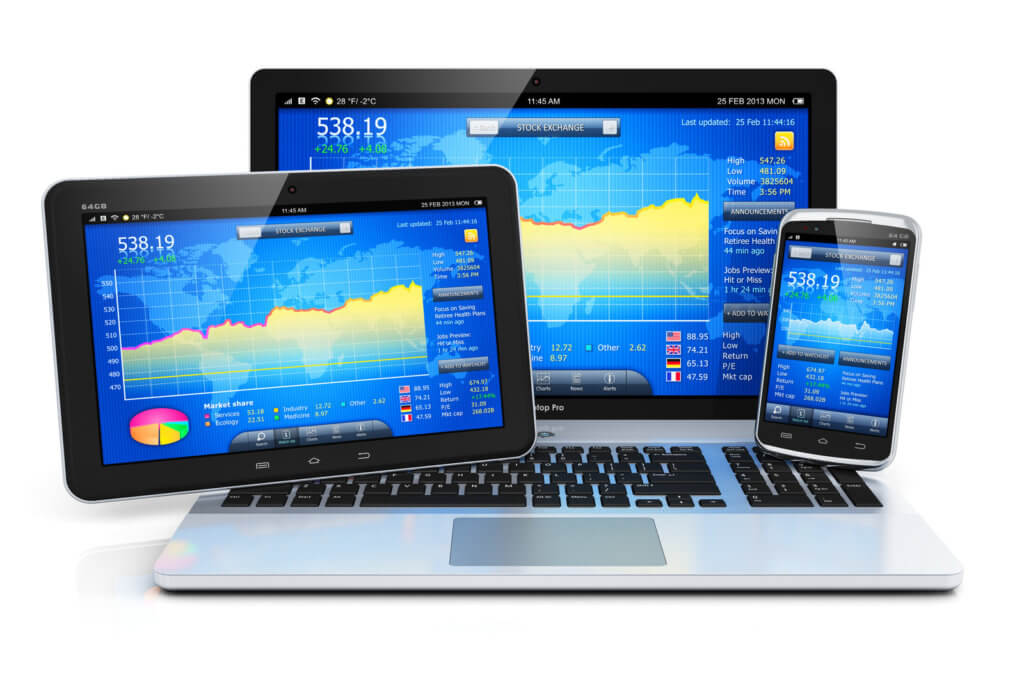
Table of Contents
- Improve Service ROI, Build your IoT Foundation for the Future
- Remote Monitoring Drives Service Performance
- Access Equipment and Device Data
- Communicate with Devices
- Leverage the Edge to Pre-Process Data
- Share Actionable Service Information
- Plan for Implementation and Adoption
- Select the Right Strategic Partner
- Next Steps
- Buyer’s Guide Checklist
- Acknowledgments
Improve Service ROI, Build your IoT Foundation for the Future
Industries are Digitally Transforming
Life Sciences companies have a tremendous opportunity to improve service operations and outcomes. At the same time, many are investigating how to benefit from the Internet of Things (IoT). Remotely monitoring medical equipment is a great way to accomplish both.
As our related Improving Service with Remote Monitoring Buyer’s Guide explains, a remote monitoring initiative allows companies to quickly achieve IoT value. In fact, the most common way that companies gain tangible ROI from IoT is through improved service. At the same time, it also paves the way for even more substantial benefits from initiatives like healthcare analytics.
Equipment Monitoring Has Proven Value
The IoT lets companies transform service to generate more – and more profitable – service revenue. They do this by moving from reactive to proactive to predictive service, and leveraging advanced technologies like AI, machine learning, and big data analytics. They can also adopt new service delivery processes like remote service. But the most common first step is reducing cost of service through remote monitoring.
Next Steps
Get Started
Leveraging the IoT can help companies improve service for themselves and their customers by reducing cost and transitioning to proactive and predictive service. Remote monitoring allows companies to identify and resolve issues remotely, providing faster service and increased uptime while reducing the cost of truck rolls and putting service technicians on site.

It can go beyond cost savings to create a new source of revenue from paid upgrades or remotely enhancing equipment capabilities or permissions by “unlocking” enhanced capabilities via a subscription. It also offers Life Sciences companies an opportunity to help ensure devices are available and operating optimally to serve patient needs.
Improve Service and Patient Outcomes
Medical device, biotech and other life science innovators embarking on a remote monitoring initiative to improve service should look for the capabilities outlined in the sections of this guide to help ensure they get the value they seek. In addition, they can use the following checklist as high-level criteria to compare offerings.
*This summary is an abbreviated version of the report and does not contain the full content. A link to download the full report is available above.
If you have difficulty obtaining a copy of the report, please contact us using the "Contact" link below.
- Deloitte, “Making Maintenance Smarter”
- Tech-Clarity, “Medical Device Manufacturer’s Selection Guide for 2018”
[post_title] => IoT Medical Device Monitoring (Buyer's Guide) [post_excerpt] => [post_status] => publish [comment_status] => open [ping_status] => open [post_password] => [post_name] => medical-device-iot [to_ping] => [pinged] => [post_modified] => 2022-11-14 22:27:56 [post_modified_gmt] => 2022-11-15 03:27:56 [post_content_filtered] => [post_parent] => 0 [guid] => https://tech-clarity.com/?p=7596 [menu_order] => 0 [post_type] => post [post_mime_type] => [comment_count] => 0 [filter] => raw ) [8] => WP_Post Object ( [ID] => 7469 [post_author] => 2572 [post_date] => 2019-03-21 14:45:28 [post_date_gmt] => 2019-03-21 18:45:28 [post_content] =>
Tech-Clarity's Preparing for EU MDR explains the impact of the EU MDR on your product data. While complying to the EU MDR may require an investment, taking the steps now to prepare your product data will not only support EU MDR compliance, but will position your company to support future regulatory requirements. In addition, these investment will also lead to greater efficiencies that will enable you to have more bandwidth to focus on innovation and quality. This report provides recommended steps to help you prepare and how software technology will make it easier.
Please enjoy the summary* below.
For the full eBook, please visit our sponsor PTC (free of charge, registration required).
The EU MDR: A Challenge and an Opportunity
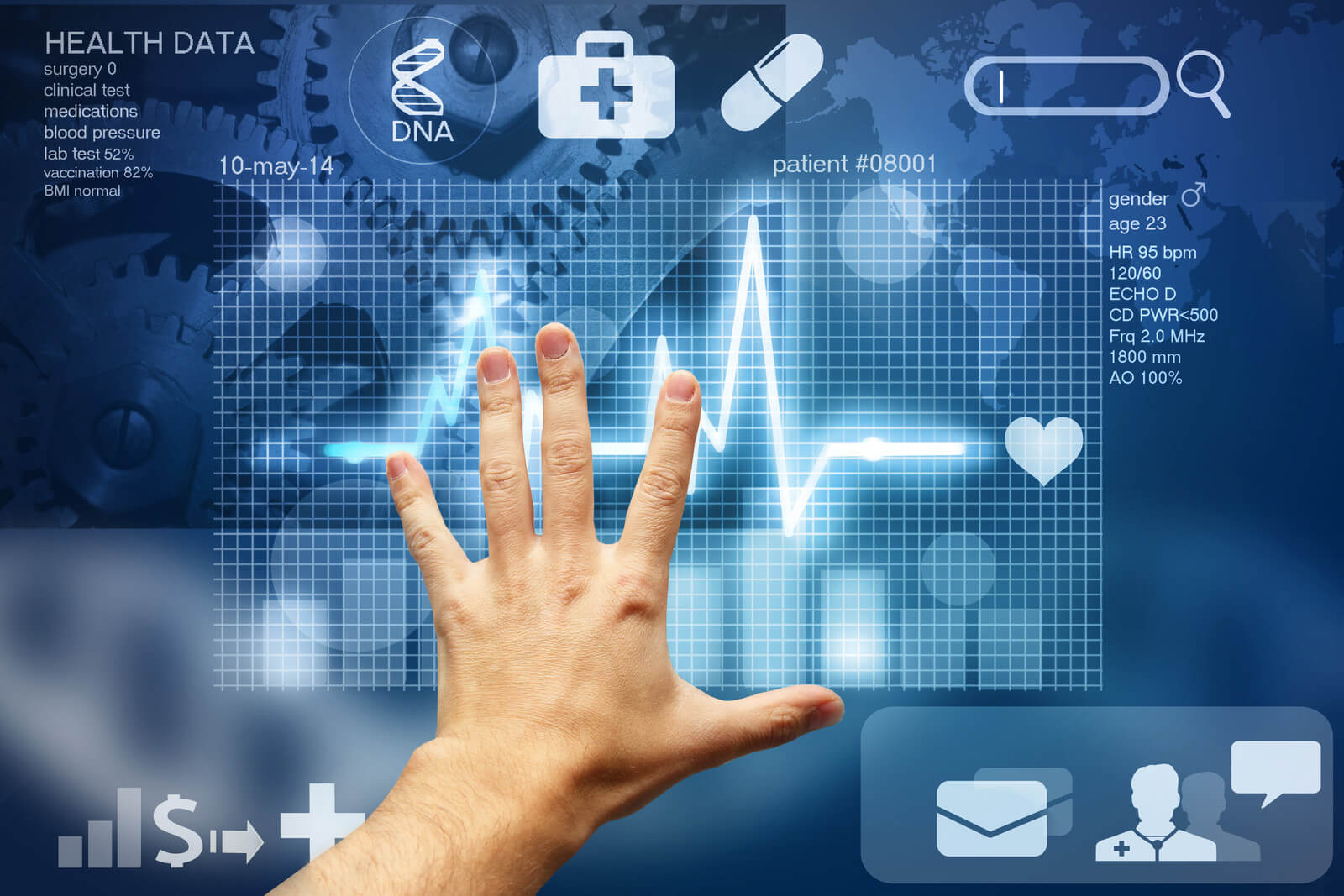 In May 2017, the EU published the new European Union Medical Device Regulation (EU MDR). The new regulation replaces the MDD (Medical Device Directive) and went into force on May 25, 2017. Medical devices have three years to comply while in vitro diagnostics have five years.
In May 2017, the EU published the new European Union Medical Device Regulation (EU MDR). The new regulation replaces the MDD (Medical Device Directive) and went into force on May 25, 2017. Medical devices have three years to comply while in vitro diagnostics have five years.
The reasons for the new regulation are admirable. As stated, "This Regulation aims to ensure the smooth functioning of the internal market…[it] sets high standards of quality and safety for medical devices in order to meet common safety concerns..." Essentially, the EU wants to ensure that medical devices are safe, high quality, meet stated expectations, and improve patient health. The EU also wants to take advantage of the technological and scientific progress made over the last 20 years.
Better Devices, but There’s Work to Do
 While taking advantage of technology advancements will lead to greater efficiencies for medical device companies, becoming compliant will require work. The EU MDR wiki states, "The new EU Medical Device Regulation (EU MDR) is not radically different from the current Medical Device Directive (MDD). That's not to underestimate the amount of work that will be required to switch from the current MDD to the new EU MDR.”1 The new regulation is largely an extension of the existing regulation, but it requires far more data. In many ways, the new regulations require processes that medical device companies should be following anyway, but have been a challenge to implement, especially without the right technology.
While taking advantage of technology advancements will lead to greater efficiencies for medical device companies, becoming compliant will require work. The EU MDR wiki states, "The new EU Medical Device Regulation (EU MDR) is not radically different from the current Medical Device Directive (MDD). That's not to underestimate the amount of work that will be required to switch from the current MDD to the new EU MDR.”1 The new regulation is largely an extension of the existing regulation, but it requires far more data. In many ways, the new regulations require processes that medical device companies should be following anyway, but have been a challenge to implement, especially without the right technology.
The Opportunity
 Considering that every medical device company that wants to do business in Europe will be undergoing efforts to comply, this transition period represents an excellent opportunity to restructure processes in ways that are more efficient, but will also lead to more innovative and higher quality devices. The transition may be challenging, but those who are most successful will likely enjoy a competitive advantage.
Considering that every medical device company that wants to do business in Europe will be undergoing efforts to comply, this transition period represents an excellent opportunity to restructure processes in ways that are more efficient, but will also lead to more innovative and higher quality devices. The transition may be challenging, but those who are most successful will likely enjoy a competitive advantage.
While the scope of the new regulation is quite broad, its implications are especially significant for product teams who will – either directly or behind the scenes – participate in the product submissions process.
This eBook shares advice to prepare product data for regulatory submissions through a programmatic and extensible approach. In this view, EU-MDR compliance serves as a catalyst for implementing sound product design, change and configuration control best practices across your product development lifecycle.
Recommendations
To establish a foundation to comply with the EU MDR, medical device companies should look to adopt a product-centric approach. Based on this research and our experience, we recommend that medical device companies do the following to support the EU MDR and a product-centric approach:
- Use the EU MDR as an opportunity to improve product related processes to improve efficiency and create more bandwidth to focus on innovation and device quality.
- To meet the increased data requirements, consider a product-centric approach. A product-centric approach uses product data, specifically CAD models, as the primary design artifact rather than a PDF. This approach establishes traceability and breaks down silos between the engineering data and documentation, making it easier to collect the data for EU MDR submissions.
- A PLM system will support this a product-centric approach can serve as a foundation for EU MDR, a PLM system supports the digital thread to tie product information, decisions, and history together in a structured, integrated way that captures product innovation and knowledge throughout the product lifecycle.
To adopt a product-centric approach, consider the following steps:
- Obtain Executive support: An Executive is required to support adoption across multiple departments and make the initiative a priority.
- Create a product data hub: Your data needs to be accessed from a central location with traceability across the lifecycle. You can accomplish this with either a single database or a data hub that connects to multiple data sources. A PLM system with a connection platform will enable the latter option.
- Structure and manage data: Structure your product data so that it is centralized and you can find it. Consider starting with your CAD data.
- Identify a cross-functional team: Take advance of the collective expertise of your teams to help identify bottlenecks and opportunities for improvements.
- Automate Product Lifecycle Processes: Map out your current processes and then how you would like them to work. Look for opportunities for technology to automate the workflow to minimize the amount of manual work.
*This summary is an abbreviated version of the eBook and does not contain the full content. A link to download the full eBook is available above.
If you have difficulty obtaining a copy of the research, please contact us using the “Contact” link below.
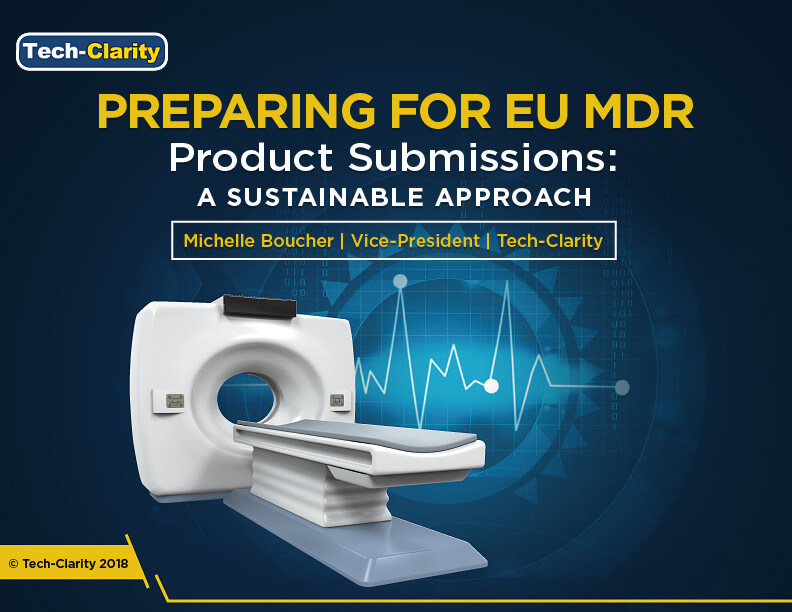
 How can manufacturers tell when they've outgrown their Product Data Management system? What should they look for to replace it? Join Tech-Clarity's Jim Brown and PTC's Mark Lobo as they help companies navigate this all-too-common scenario. The interactive presentation will share what's missing in most basic PDM / Engineering Document Management (EDM) systems and what to look for in a more advanced PDM solution that does more than manage CAD, what some might call cPDM. The presentation shares Jim and Mark's experience as well as findings from a recent Buyer's Guide that shares functional requirements, implementation needs, vendor considerations, and other special concerns such as preparing for the future.
Watch the PTC sponsored webcast replay now (registration required).
How can manufacturers tell when they've outgrown their Product Data Management system? What should they look for to replace it? Join Tech-Clarity's Jim Brown and PTC's Mark Lobo as they help companies navigate this all-too-common scenario. The interactive presentation will share what's missing in most basic PDM / Engineering Document Management (EDM) systems and what to look for in a more advanced PDM solution that does more than manage CAD, what some might call cPDM. The presentation shares Jim and Mark's experience as well as findings from a recent Buyer's Guide that shares functional requirements, implementation needs, vendor considerations, and other special concerns such as preparing for the future.
Watch the PTC sponsored webcast replay now (registration required).
 For more information, please see our related Buyer's Guide, below:
https://tech-clarity.com/outgrown-pdm/7356
[post_title] => Top Ten Signs You've Outgrown Your PDM System (webcast)
[post_excerpt] =>
[post_status] => publish
[comment_status] => open
[ping_status] => open
[post_password] =>
[post_name] => outgrown-pdm-webcast
[to_ping] =>
[pinged] =>
[post_modified] => 2022-11-14 22:26:52
[post_modified_gmt] => 2022-11-15 03:26:52
[post_content_filtered] =>
[post_parent] => 0
[guid] => https://tech-clarity.com/?p=7453
[menu_order] => 0
[post_type] => post
[post_mime_type] =>
[comment_count] => 0
[filter] => raw
)
[10] => WP_Post Object
(
[ID] => 7445
[post_author] => 2
[post_date] => 2019-02-19 11:13:39
[post_date_gmt] => 2019-02-19 16:13:39
[post_content] =>
For more information, please see our related Buyer's Guide, below:
https://tech-clarity.com/outgrown-pdm/7356
[post_title] => Top Ten Signs You've Outgrown Your PDM System (webcast)
[post_excerpt] =>
[post_status] => publish
[comment_status] => open
[ping_status] => open
[post_password] =>
[post_name] => outgrown-pdm-webcast
[to_ping] =>
[pinged] =>
[post_modified] => 2022-11-14 22:26:52
[post_modified_gmt] => 2022-11-15 03:26:52
[post_content_filtered] =>
[post_parent] => 0
[guid] => https://tech-clarity.com/?p=7453
[menu_order] => 0
[post_type] => post
[post_mime_type] =>
[comment_count] => 0
[filter] => raw
)
[10] => WP_Post Object
(
[ID] => 7445
[post_author] => 2
[post_date] => 2019-02-19 11:13:39
[post_date_gmt] => 2019-02-19 16:13:39
[post_content] =>  What should Life Sciences Companies look for in a solution to transform service using IoT remote monitoring? Tech-Clarity's Jim Brown and PTC's Anthony Moffa will share recent research and industry experience on this Medical Design & Outsourcing webcast, How to Select a Remote Monitoring Solution to Transform Your Service Model. The webcast will cover how to improve service maturity to better service medical equipment, leading to both higher profitability and better patient outcomes. We'll also share how this initiative can set the foundation for even broader IoT and digitalization benefits.
What should Life Sciences Companies look for in a solution to transform service using IoT remote monitoring? Tech-Clarity's Jim Brown and PTC's Anthony Moffa will share recent research and industry experience on this Medical Design & Outsourcing webcast, How to Select a Remote Monitoring Solution to Transform Your Service Model. The webcast will cover how to improve service maturity to better service medical equipment, leading to both higher profitability and better patient outcomes. We'll also share how this initiative can set the foundation for even broader IoT and digitalization benefits.
 Register for the Medical Design & Sourcing webinar today (no charge, registration required).
Register for the Medical Design & Sourcing webinar today (no charge, registration required).
Event Synopsis
In the IoT era, service transformation is the new frontier of innovation. For life sciences and medical device innovators, remote monitoring is the superpower that unlocks service value through reduced service costs, improved customer satisfaction, and greater insight. When it comes to choosing the best remote monitoring software, medical device makers have many factors to consider. Fortunately, you don’t have to make the decision alone. In this upcoming February 28 discussion, Jim Brown and Anthony Moffa put remote monitoring under the microscope. Hear the crucial steps to choosing a remote monitoring solution and learn:- The three stages of connected services maturity.
- The critical role of software analytics – and what to look for.
- How to make the most of your IoT investment from device design all the way through to maintenance and service.
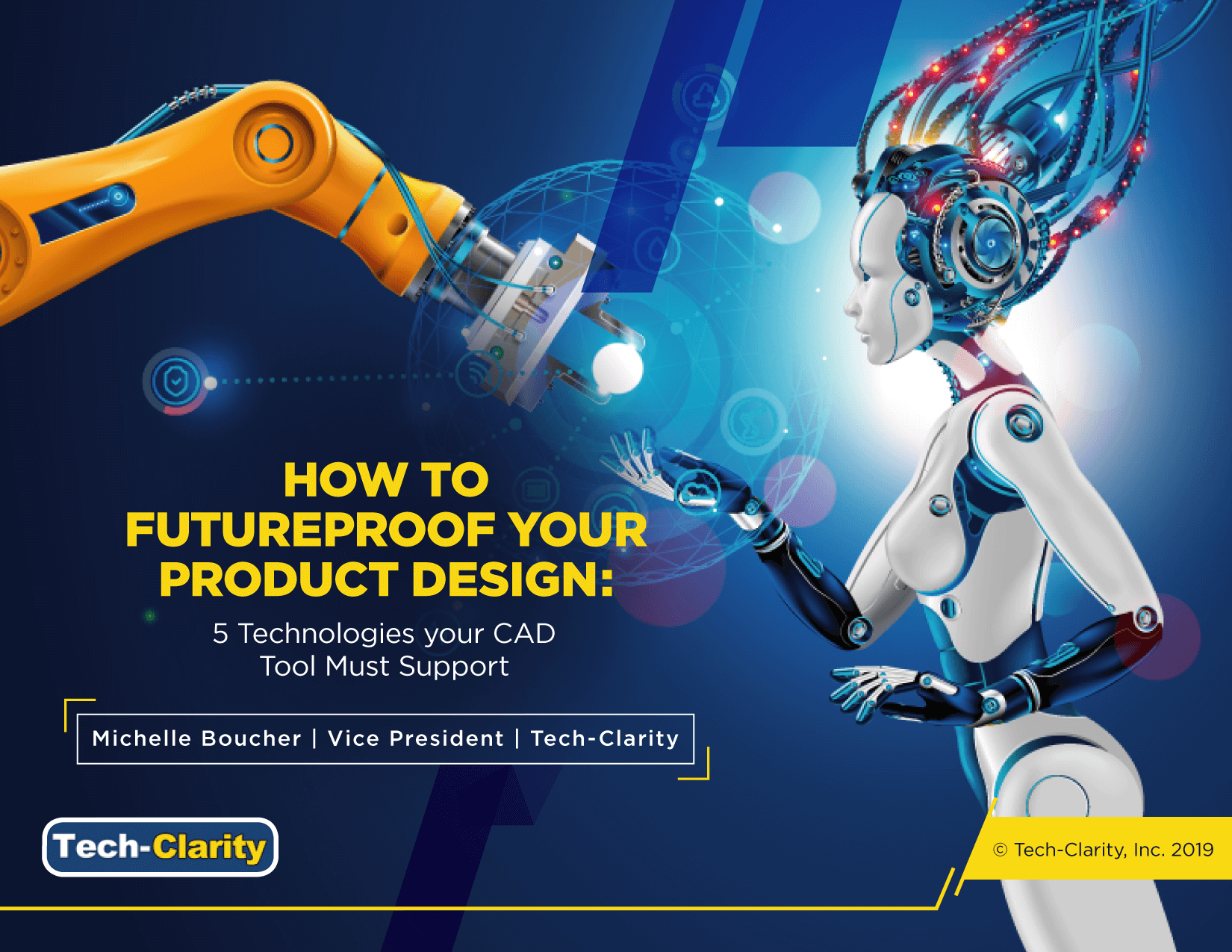 Is your CAD tool ready for the 2020s? Does it have the features you need to keep your company competitive?
Tech-Clarity's How to Futureproof Your Product Design: 5 Technologies Your CAD Tool Must Support describes the key technologies that will impact design in the 2020s. Based on a survey of over 200 manufacturers, respondents identified the top technologies that will change how they design products. This report describes how these technologies will impact design and how a CAD tool should help you.
Please enjoy the summary* below.
For the full eBook, please visit our sponsor SOLIDWORKS (free of charge, registration required).
Is your CAD tool ready for the 2020s? Does it have the features you need to keep your company competitive?
Tech-Clarity's How to Futureproof Your Product Design: 5 Technologies Your CAD Tool Must Support describes the key technologies that will impact design in the 2020s. Based on a survey of over 200 manufacturers, respondents identified the top technologies that will change how they design products. This report describes how these technologies will impact design and how a CAD tool should help you.
Please enjoy the summary* below.
For the full eBook, please visit our sponsor SOLIDWORKS (free of charge, registration required).
Is Your CAD Tool Ready for the 2020s?
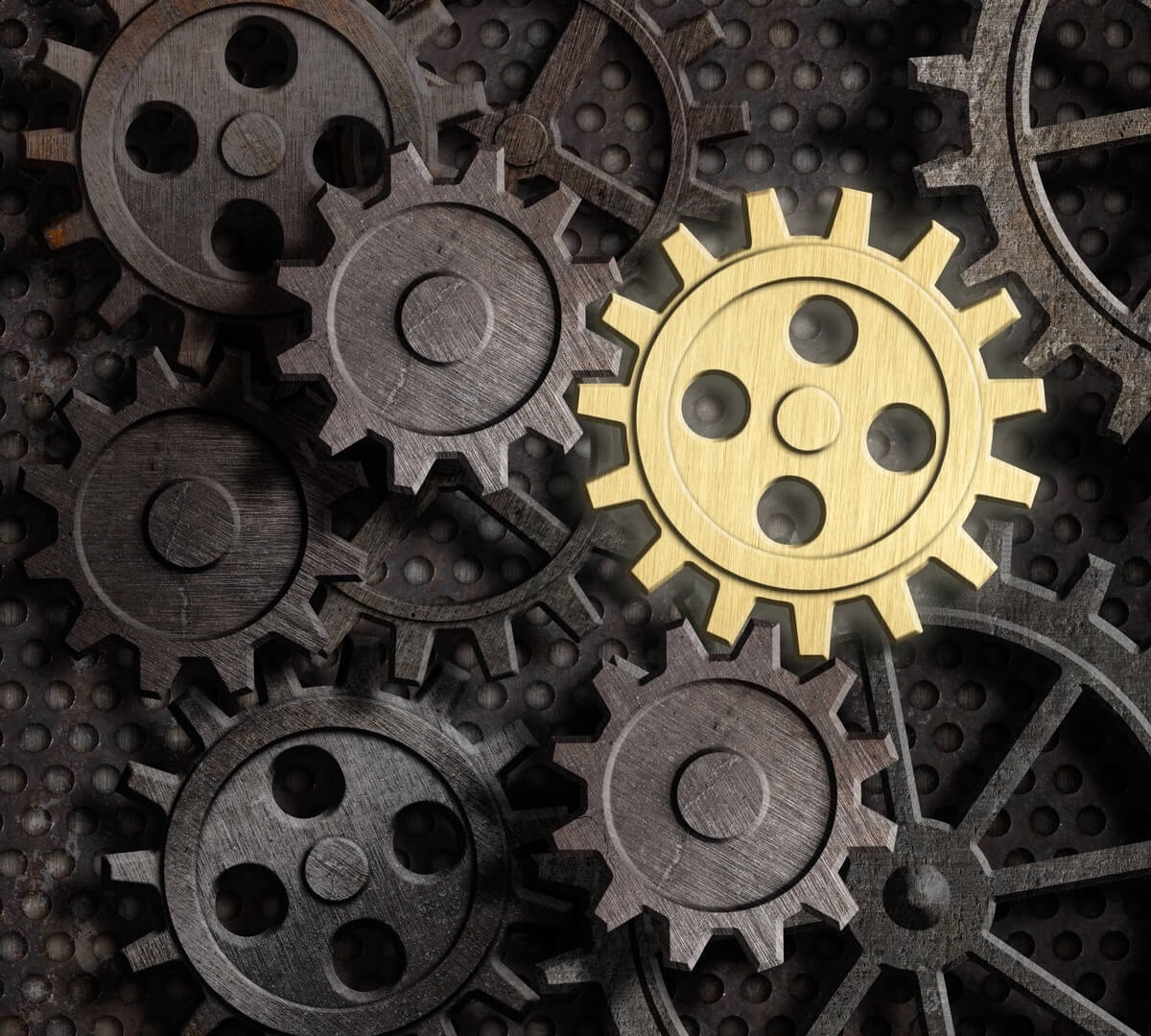
How Will You Stay Competitive in the 2020s?
 You Will Need the Right Software Tools
While the right strategy around cutting-edge technologies is critical to avoid these negative impacts, you must also empower your teams with proper processes and technology. Consequently, you also need capabilities to manage the resulting complexity. This research reveals what successful companies do to help them succeed and stay ahead of the competition while they prepare for the next decade.
*This summary is an abbreviated version of the eBook and does not contain the full content. A link to download the full eBook is available above.
If you have difficulty obtaining a copy of the research, please contact us using the “Contact” link below.
[post_title] => How to Futureproof Your Product Design (survey results)
[post_excerpt] =>
[post_status] => publish
[comment_status] => open
[ping_status] => open
[post_password] =>
[post_name] => how-to-futureproof-your-product-design-survey-results
[to_ping] =>
[pinged] =>
[post_modified] => 2022-11-14 22:28:50
[post_modified_gmt] => 2022-11-15 03:28:50
[post_content_filtered] =>
[post_parent] => 0
[guid] => https://tech-clarity.com/?p=7422
[menu_order] => 0
[post_type] => post
[post_mime_type] =>
[comment_count] => 0
[filter] => raw
)
[12] => WP_Post Object
(
[ID] => 7395
[post_author] => 2
[post_date] => 2019-02-13 10:25:13
[post_date_gmt] => 2019-02-13 15:25:13
[post_content] =>
You Will Need the Right Software Tools
While the right strategy around cutting-edge technologies is critical to avoid these negative impacts, you must also empower your teams with proper processes and technology. Consequently, you also need capabilities to manage the resulting complexity. This research reveals what successful companies do to help them succeed and stay ahead of the competition while they prepare for the next decade.
*This summary is an abbreviated version of the eBook and does not contain the full content. A link to download the full eBook is available above.
If you have difficulty obtaining a copy of the research, please contact us using the “Contact” link below.
[post_title] => How to Futureproof Your Product Design (survey results)
[post_excerpt] =>
[post_status] => publish
[comment_status] => open
[ping_status] => open
[post_password] =>
[post_name] => how-to-futureproof-your-product-design-survey-results
[to_ping] =>
[pinged] =>
[post_modified] => 2022-11-14 22:28:50
[post_modified_gmt] => 2022-11-15 03:28:50
[post_content_filtered] =>
[post_parent] => 0
[guid] => https://tech-clarity.com/?p=7422
[menu_order] => 0
[post_type] => post
[post_mime_type] =>
[comment_count] => 0
[filter] => raw
)
[12] => WP_Post Object
(
[ID] => 7395
[post_author] => 2
[post_date] => 2019-02-13 10:25:13
[post_date_gmt] => 2019-02-13 15:25:13
[post_content] =>  How are innovative automotive companies leveraging immersive, real-time 3D to improve innovation? How can they use highly realistic, interactive, virtual experiences to enhance design, engineering, manufacturing engineering, sales, marketing, training, and more? This eBook shares industry insights and experiences from Ford, Audi, Teague, Team One / Saatchi & Saatchi, and other manufacturers to shed light on the opportunity.
The Value of Immersive 3D Automotive Experiences eBook shares interviews with leading manufacturing, design, and marketing firms to offer insight into how auto companies can create compelling visual representations that excite buyers, inform engineers, optimize design decisions, and improve training. The research shares how companies are using tools from the gaming industry in combination with their CAD models to lower the barriers to creating these powerful, virtual capabilities. The eBook shares a variety of approaches manufacturers are adopting along with the business benefits they're achieving.
Please enjoy the summary below. For the full report, please visit our sponsor Unity (no charge, registration required).
How are innovative automotive companies leveraging immersive, real-time 3D to improve innovation? How can they use highly realistic, interactive, virtual experiences to enhance design, engineering, manufacturing engineering, sales, marketing, training, and more? This eBook shares industry insights and experiences from Ford, Audi, Teague, Team One / Saatchi & Saatchi, and other manufacturers to shed light on the opportunity.
The Value of Immersive 3D Automotive Experiences eBook shares interviews with leading manufacturing, design, and marketing firms to offer insight into how auto companies can create compelling visual representations that excite buyers, inform engineers, optimize design decisions, and improve training. The research shares how companies are using tools from the gaming industry in combination with their CAD models to lower the barriers to creating these powerful, virtual capabilities. The eBook shares a variety of approaches manufacturers are adopting along with the business benefits they're achieving.
Please enjoy the summary below. For the full report, please visit our sponsor Unity (no charge, registration required).

Table of Contents
- Automotive Innovators Gaining Value from Real-Time, Immersive 3D
- Add Excitement and Efficiency to Marketing and Sales
- Increase Insight and Iteration in Product Innovation and Design
- Add Realism and Immersion to R&D and Engineering
- Boost Productivity and Quality in Manufacturing Engineering
- Reduce Constraints and Add Interest to Training
- Unleash Innovation and Explore Additional Uses
- Roadblocks and Speed Bumps Removed
- The Automotive Industry Is Hitting the Accelerator
- Lead, Follow the Leaders, or Fall Further Behind
- About the Author
- Experience Automotive Emotion in Action
A car represents a unique blend of advanced technology and consumer desires, and automotive marketing campaigns are tailored to evoke both rational and emotional responses from customers. Auto companies and advertising agencies have become highly adept at showing lifelike driving experiences. Today’s customers have the opportunity to experience a car in a spectacular setting, even before a single unit has been produced.
Innovators Taking 3D Beyond the Basics
The innovators are doing even more, gaining value by sharing interactive, real-time 3D experiences across the enterprise and the supply chain. They can create buyer excitement with fully immersive configurators that customers can interactively explore in 3D. They can collaborate on interior designs in global, virtual reality design reviews to innovate and catch errors early. They can analyze the impact of manufacturing engineering decisions on perceived quality by viewing fit and finish in real-time under a variety of lighting conditions. They can even interactively experience airflow simulation results by stepping inside a virtual smoke stream. Or, they can train operators to assemble engines in augmented reality before the line is built and without expensive mockups.

Opportunities Span the Automotive Enterprise
The opportunities are extensive. This eBook examines the benefits along multiple dimensions, including the following:
- Marketing and Sales
- Product Innovation and Design
- R&D and Engineering
- Manufacturing Engineering
- Training
The eBook shares valuable insights from interviews with industry leaders Ford and Teague, and highlights from a recent industry conference with speakers from Audi, EDAG, and Team One. It concludes with some valuable insights to help auto companies better understand the opportunities and enabling technologies available to help them take advantage of real-time, interactive, immersive 3D.
Real-time 3D Is Coming, Ready or Not
The value of using real-time, immersive 3D in the automotive industry is compelling. The leaders will continue to innovate and expand on their lead. More importantly, lowered barriers to entry mean more companies will be able to take advantage of real-time 3D benefits, including startups that are embracing digitalization in order to displace industry veterans. Immersive, real-time 3D is quickly becoming a critical part of the modern technical toolkit for the automotive industry. We believe the innovators will continue to push forward, while those that don’t adopt immersive 3D technologies will fall further behind.
Getting Started
It’s time for companies to find an opportunity or a problem and address it. Companies should start small with a proof of concept (POC) as a first step. The POC, however, should provide value and not just serve as a learning exercise. Create value, learn, and build on that knowledge with next steps. Companies can choose a project similar to the ones described here, leveraging the experience of the pioneers, or unlock the creativity of their own organization by, for example, holding a “hackathon.”
The Time to Act Is Now
If your company has been waiting to get involved with real-time 3D, now is the time. The costs have dropped tremendously. The time required to build valuable solutions in 3D is much lower. Specialized development resources are now ready to go. Computing power is available onsite or via the cloud. Real-time, immersive 3D use cases have never been more in reach. Companies that adopt real-time 3D can still gain an advantage, while automotive companies can reap significant benefits in multiple dimensions of their business:
- Marketing and Sales
- Product Innovation and Design
- R&D and Engineering
- Manufacturing Engineering
- Training
- Autonomous Vehicle Training
- VR Analytics
During this on-demand webinar, Tech-Clarity's Michelle Boucher and Anshuman Prakash from Siemens share perspectives on better requirements management. They also provide advice to make the process easier. During the webinar, you will learn:
- How to address common challenges that lead to missed requirements
- How to easily assess the impact of proposed design changes
- What strategies can keep budgets in check when requirements change
- How to manage requirements across mechanical and electrical domains
 [post_title] => Better Requirements Management to Save Your Bottom Line (Webcast)
[post_excerpt] =>
[post_status] => publish
[comment_status] => open
[ping_status] => open
[post_password] =>
[post_name] => better-requirements-management
[to_ping] =>
[pinged] =>
[post_modified] => 2022-11-14 22:26:47
[post_modified_gmt] => 2022-11-15 03:26:47
[post_content_filtered] =>
[post_parent] => 0
[guid] => https://tech-clarity.com/?p=7392
[menu_order] => 0
[post_type] => post
[post_mime_type] =>
[comment_count] => 0
[filter] => raw
)
[14] => WP_Post Object
(
[ID] => 7382
[post_author] => 2572
[post_date] => 2019-01-21 11:04:05
[post_date_gmt] => 2019-01-21 16:04:05
[post_content] => Did you know that 9.9% of every dollar spent on projects is wasted due to poor project performance?
[post_title] => Better Requirements Management to Save Your Bottom Line (Webcast)
[post_excerpt] =>
[post_status] => publish
[comment_status] => open
[ping_status] => open
[post_password] =>
[post_name] => better-requirements-management
[to_ping] =>
[pinged] =>
[post_modified] => 2022-11-14 22:26:47
[post_modified_gmt] => 2022-11-15 03:26:47
[post_content_filtered] =>
[post_parent] => 0
[guid] => https://tech-clarity.com/?p=7392
[menu_order] => 0
[post_type] => post
[post_mime_type] =>
[comment_count] => 0
[filter] => raw
)
[14] => WP_Post Object
(
[ID] => 7382
[post_author] => 2572
[post_date] => 2019-01-21 11:04:05
[post_date_gmt] => 2019-01-21 16:04:05
[post_content] => Did you know that 9.9% of every dollar spent on projects is wasted due to poor project performance?
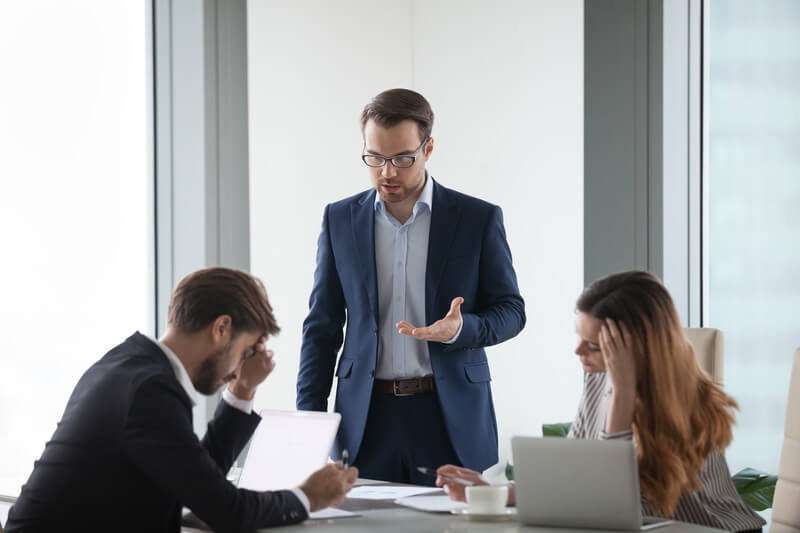 This startling statistic comes from research done by the Project Management Institute (PMI), published in their 2018 Pulse of the Profession® report. In a guest post on the Siemens Solid Edge blog, Michelle Boucher outlines some key reasons why a requirements management solution can help improve the performance of product development projects so that you can minimize or even avoid some of the challenges that contribute to wasted budget.
This startling statistic comes from research done by the Project Management Institute (PMI), published in their 2018 Pulse of the Profession® report. In a guest post on the Siemens Solid Edge blog, Michelle Boucher outlines some key reasons why a requirements management solution can help improve the performance of product development projects so that you can minimize or even avoid some of the challenges that contribute to wasted budget.
Requirements Management Is Critical to Project Success
When PMI dug deeper into the reasons for project failures, they found that the top three issues include changing priorities, changing objectives, and inaccurate requirements gathering. While these problems create substantial challenges, they can become easier to manage with improvements to requirements management. Requirements management has a significant impact on project performance. Getting it right can mean the difference between a successful new product development project or a failure.New Ways of Working Are Needed
So how do these issues impact requirements management? The critical point is adapting to change, which companies must do to survive in today's competitive global economy. For a new product development project, getting the design right starts with the requirements. However, markets are evolving so rapidly, no wonder there are changing priorities and objectives. Disruptive technologies are bringing new sources of innovation and changing how we do business. Alternative sources of funding like Kickstarter have lowered the barriers to entry for start-ups, and the internet and cloud technology have expanded companies’ global reach so that even small companies can operate like larger ones. Responding to these trends impacts requirements, but if you cannot adapt quickly, you risk losing market share. With today's changing market dynamics, old ways of working may no longer be enough. You may need to find new ways of working to be competitive Continue to the Siemens Solid Edge blog for the full post. For more information on requirements management, access the on demand webinar titled, Better Requirements Management to Save Your Bottom Line. (registration required). [post_title] => Better Requirements Management: An Immediate Payback (Guest Post) [post_excerpt] => [post_status] => publish [comment_status] => open [ping_status] => open [post_password] => [post_name] => better_requirements_management [to_ping] => [pinged] => [post_modified] => 2022-11-14 22:26:06 [post_modified_gmt] => 2022-11-15 03:26:06 [post_content_filtered] => [post_parent] => 0 [guid] => https://tech-clarity.com/?p=7382 [menu_order] => 0 [post_type] => post [post_mime_type] => [comment_count] => 0 [filter] => raw ) [15] => WP_Post Object ( [ID] => 7369 [post_author] => 2 [post_date] => 2019-01-03 08:23:54 [post_date_gmt] => 2019-01-03 13:23:54 [post_content] =>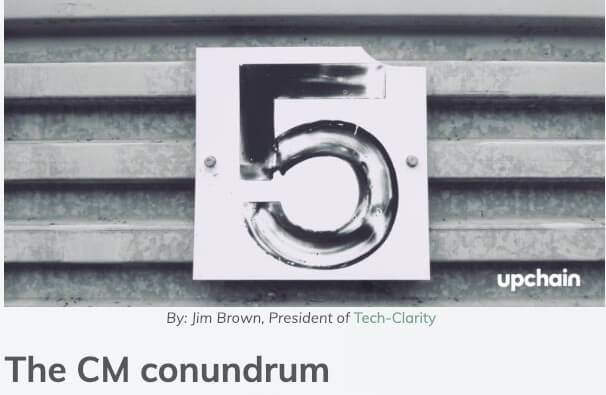 What challenges do manufacturers encounter when working with contract manufacturers? What should they do to reduce the frustration and streamline the relationship?
Jim Brown introduces five questions you may find yourself asking if you're working with a CMO, CDMO, or other supply chain partners and then offers recommendations based on our experience and research in this guest post on the upchain blog. Read the CM Conundrum post on the upchain site now (no charge, no registration required).
What challenges do manufacturers encounter when working with contract manufacturers? What should they do to reduce the frustration and streamline the relationship?
Jim Brown introduces five questions you may find yourself asking if you're working with a CMO, CDMO, or other supply chain partners and then offers recommendations based on our experience and research in this guest post on the upchain blog. Read the CM Conundrum post on the upchain site now (no charge, no registration required).
Introduction
Working with contract manufacturers can be one of those “you can’t live with them, you can’t live without them” scenarios. Leveraging contract manufacturing organizations (CMO) is a reality for many companies and can be a great way to jumpstart a product when you don’t have the time or capital to bring up your own plants. What’s more, manufacturers with complex, digital products like telecommunications or other electronic devices may not have another viable option. They simply can’t get from prototype to scale on their own given the required time, money, and manufacturing knowhow. But working with third parties can be frustrating, particularly if you’re used to making all of the calls and you’re new to the process. It doesn’t seem like it should be so hard, but there’s a lot that can go wrong – and it usually does. You may find yourself asking some frustrating questions, but there are ways to manage the inherent challenges and be successful. Let’s explore five questions you may find yourself asking during your CMO partnership, and what you can do about them. Continue to the upchain site for the full post. [post_title] => 5 Frustrations of Working with Contract Manufacturers (guest post) [post_excerpt] => [post_status] => publish [comment_status] => open [ping_status] => open [post_password] => [post_name] => contract-mfg-challenges [to_ping] => [pinged] => [post_modified] => 2022-11-14 22:25:36 [post_modified_gmt] => 2022-11-15 03:25:36 [post_content_filtered] => [post_parent] => 0 [guid] => https://tech-clarity.com/?p=7369 [menu_order] => 0 [post_type] => post [post_mime_type] => [comment_count] => 0 [filter] => raw ) [16] => WP_Post Object ( [ID] => 7356 [post_author] => 2 [post_date] => 2018-12-13 09:30:15 [post_date_gmt] => 2018-12-13 14:30:15 [post_content] => What should manufacturers look for when it’s time to replace their outgrown PDM system? Our research shows a high correlation between elevated business performance and strong product data management capabilities. Unfortunately, we find many manufacturers have already stretched the limits of what their basic Product Data Management (PDM) system can do. In most cases, it meets fundamental CAD management or engineering document management needs, but falls short beyond keeping data in control. What should they look for in a replacement PDM solution?
This eBook shares the Top Ten signs you've outgrown your PDM system and then shares requirements to use as the basis for selecting an extended PDM solution to Control, Access, and Share product data. Like our other Buyer's Guides, we look beyond software requirements to the other elements that help companies get value from their solutions, including criteria to consider for implementation, adoption, service, and vendor selection. This guide also covers special needs including advice for smaller and larger manufacturers and shares considerations for addressing some specific industry needs and supporting the transition to the digital enterprise.
Click here for our full Buyer's guide, thank you to our sponsor PTC.
Please also see our Upgrading to PLM when PDM Falls Short buyer's guide.
What should manufacturers look for when it’s time to replace their outgrown PDM system? Our research shows a high correlation between elevated business performance and strong product data management capabilities. Unfortunately, we find many manufacturers have already stretched the limits of what their basic Product Data Management (PDM) system can do. In most cases, it meets fundamental CAD management or engineering document management needs, but falls short beyond keeping data in control. What should they look for in a replacement PDM solution?
This eBook shares the Top Ten signs you've outgrown your PDM system and then shares requirements to use as the basis for selecting an extended PDM solution to Control, Access, and Share product data. Like our other Buyer's Guides, we look beyond software requirements to the other elements that help companies get value from their solutions, including criteria to consider for implementation, adoption, service, and vendor selection. This guide also covers special needs including advice for smaller and larger manufacturers and shares considerations for addressing some specific industry needs and supporting the transition to the digital enterprise.
Click here for our full Buyer's guide, thank you to our sponsor PTC.
Please also see our Upgrading to PLM when PDM Falls Short buyer's guide.
Table of Contents
- What to do When You've Outgrown Your PDM
- Introducing the Buyer’s Guide for a More Capable PDM Solution
- Top Ten Signs You've Outgrown Your PDM System
- Extending the Control - Access - Share Basics
- Going Beyond PDM Basics
- Extended PDM Requirements
- New Considerations for Service, Vendor, and Special Considerations
- Next Steps
- About the Author

Introducing the PDM Buyer’s Guide
Exceeding the Limits of Basic PDM Although our PDM Buyer’s Guide recommends “considering both current and future needs” when evaluating solutions and “building a foundation to grow on,” there are many valid reasons companies end up outgrowing their system:- Product complexity has increased
- Product development complexity has grown
- Business has expanded
- Business has globalized
 Understanding the Buyer’s Guide Structure
Like our other buyer’s guides, we go beyond functional requirements to address implementation, adoption, vendor partner, and special considerations. We also touch on another recommendation from our PDM guide, specifically how manufacturers can make sure they don’t hit another dead end with their new system as they evolve to become a more digital enterprise.
Understanding the Buyer’s Guide Structure
Like our other buyer’s guides, we go beyond functional requirements to address implementation, adoption, vendor partner, and special considerations. We also touch on another recommendation from our PDM guide, specifically how manufacturers can make sure they don’t hit another dead end with their new system as they evolve to become a more digital enterprise.
Next Steps
Extend Basic PDM Investment to Increase Value Companies that have outgrown their PDM system can leverage their existing investment in organizing CAD files and adopt a new system to take advantage of more mature capabilities. Our research shows the value of the transition. Top Performing companies are more likely to have structured, collaborative systems like a more mature PDM or a PLM system. It’s time to go beyond EDM or basic PDM systems to help unlock innovation and improve product development efficiency. The requirements set forth in this guide can help frame the software selection and decision-making process to find the right system. Companies should start by focusing on the highlighted areas in the Control - Access – Share sections. This is where less capable, “generalist” file management solutions fall short because they lack an intimate understanding of processes for product innovation, product development, engineering, and support. Companies should also consider the requirements in the four new areas discussed in this guide. Create the Foundation for Further Growth As companies adopt a more advanced PDM system, it’s important to give themselves room to expand to more mature capabilities over time. For many companies, that involves adopting advanced PDM capabilities as part of a more comprehensive PLM system to address additional aspects of products, process, departments, and product lifecycles. These are the key areas that expand PDM to PLM, and areas that PLM vendors continue to expand their solution scope. Consider a Platform for the Greatest Potential Value One good option manufacturers should consider to meet extended PDM needs is adopting a Product Innovation Platform (PIP). A PIP offers manufacturers the ability to expand PDM today and create room to grow as they are ready to adopt more, or more mature, processes. A PIP with a modular approach will allow them to scale and add capabilities as they need them. Some common areas that manufacturers extend include:- Requirements Management
- Quality Management
- Product Costing
- Product Compliance and Sustainability
- Manufacturing / Bill of Process
- Service Lifecycle Management
- Systems Engineering
- Program Management
*This summary is an abbreviated version of the report and does not contain the full content. A link to download the full report is available above.
If you have difficulty obtaining a copy of the report, please contact us using the "Contact" link below. [post_title] => Expanding Beyond Your Outgrown PDM System (Buyer's Guide) [post_excerpt] => [post_status] => publish [comment_status] => open [ping_status] => open [post_password] => [post_name] => outgrown-pdm [to_ping] => [pinged] => [post_modified] => 2022-11-14 22:27:55 [post_modified_gmt] => 2022-11-15 03:27:55 [post_content_filtered] => [post_parent] => 0 [guid] => https://tech-clarity.com/?p=7356 [menu_order] => 0 [post_type] => post [post_mime_type] => [comment_count] => 0 [filter] => raw ) [17] => WP_Post Object ( [ID] => 7325 [post_author] => 2 [post_date] => 2018-11-19 09:10:21 [post_date_gmt] => 2018-11-19 14:10:21 [post_content] =>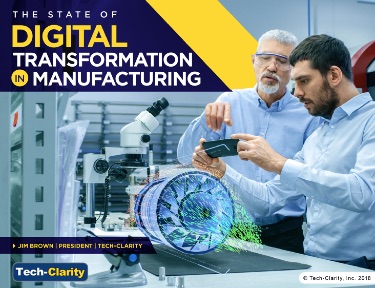 Manufacturing is going through a significant, digital transformation that's disrupting the industry status quo. Companies are investing in digital transformation, smart manufacturing, Industry 4.0, Internet of Things (IoT), and other related initiatives. What are they prioritizing? And, what are they actually taking action on? Tech-Clarity surveyed over 130 manufacturers to find out. The report analyzes companies strategic priorities including Industry 4.0, IoT, IIoT, Digital Twin, Digital Thread, Augmented Reality (AR), and Virtual Reality (VR). It also investigates how they're executing against them as an enterprise including:
Manufacturing is going through a significant, digital transformation that's disrupting the industry status quo. Companies are investing in digital transformation, smart manufacturing, Industry 4.0, Internet of Things (IoT), and other related initiatives. What are they prioritizing? And, what are they actually taking action on? Tech-Clarity surveyed over 130 manufacturers to find out. The report analyzes companies strategic priorities including Industry 4.0, IoT, IIoT, Digital Twin, Digital Thread, Augmented Reality (AR), and Virtual Reality (VR). It also investigates how they're executing against them as an enterprise including:
- If they have executive sponsorship
- Whether they're budgeted
- If a cross-functional team is deployed
- How systems like PLM can help
“Digital” is Viewed as a Significant Business Priority
Executive Overview Manufacturers are weighing their options and considering a number of strategic manufacturing initiatives. Many of them are related and all are competing for budget, time, and attention. Which investments are getting the most attention? How are manufacturers addressing the opportunities? How are they leveraging PLM solutions as an enabler? Tech-Clarity conducted a survey of over 130 manufacturers to find out. The program most frequently cited as critical to the business strategy is Digitalization / Digital Enterprise. More than one-half of respondents say that these digital initiatives are “important” if not “critical” to their business strategy.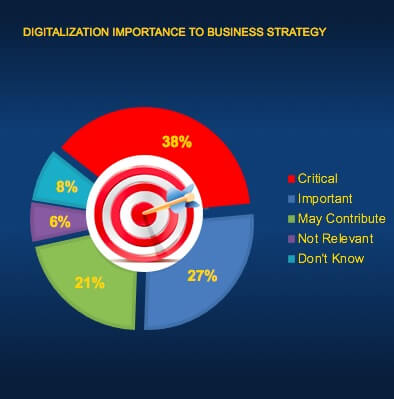 PLM’s Role in Supporting Digital Transformation
The survey also investigates how Product Lifecycle Management (PLM) supports these strategic manufacturing initiatives. The study finds that PLM not only provides strategic value to existing operations, but also maps well to the manufacturers’ strategic initiatives. This reflects PLM’s importance as the backbone of the digital manufacturing enterprise.
PLM’s Role in Supporting Digital Transformation
The survey also investigates how Product Lifecycle Management (PLM) supports these strategic manufacturing initiatives. The study finds that PLM not only provides strategic value to existing operations, but also maps well to the manufacturers’ strategic initiatives. This reflects PLM’s importance as the backbone of the digital manufacturing enterprise.
A Variety of Digital Initiatives are Deemed Strategic
Digital Transformation is the Leading Priority Surveyed companies report Digital Transformation as the initiative most critical to achieving their business strategy. The second most commonly cited initiative is IoT (Internet of Things). IoT may be a subset of an overall digital transformation initiative. In fact, “Digital Transformation” may serve as a strategic umbrella for many of the initiatives investigated. Industry 4.0 is a High Priority Beyond digitalization, reported on par with IoT initiatives, is Industry 4.0 which was defined as “Industry 4.0 / Smart Manufacturing.” Roughly one-half of companies surveyed say that these initiatives are important or critical to achieving their business strategy.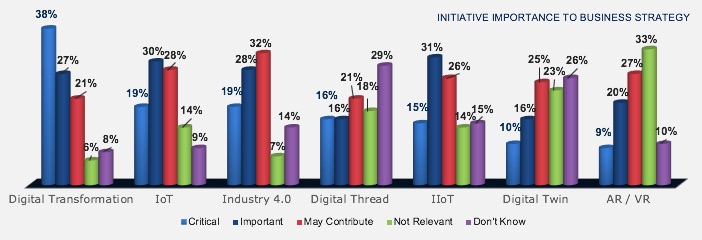 Uncertainty Surrounds Digital Twin and Digital Thread
Manufacturers appear to be unclear about the value of Digital Twin and Digital Thread initiatives. For each, more than one-quarter of respondents claim that they don’t know how important these initiatives are to their business. These are both newer concepts, or at least more prevalently discussed today. Manufacturers should educate themselves on the potential of these important initiatives and explore the value. Lastly, responses to AR / VR value likely reflect that they are more enablers than strategies by themselves.
Uncertainty Surrounds Digital Twin and Digital Thread
Manufacturers appear to be unclear about the value of Digital Twin and Digital Thread initiatives. For each, more than one-quarter of respondents claim that they don’t know how important these initiatives are to their business. These are both newer concepts, or at least more prevalently discussed today. Manufacturers should educate themselves on the potential of these important initiatives and explore the value. Lastly, responses to AR / VR value likely reflect that they are more enablers than strategies by themselves.
Initiatives Vary in Level of Executional Traction
Investigating Initiative Traction The initiatives most frequently reported as critical to the business strategy are Digitalization, IoT, and Industry 4.0. Let’s look beyond what companies say is important to understand what they’re doing about it. Budget
Digital Transformation is more likely than the other initiatives to have a formal budget. Other initiatives with budgets in one-half or more of responding companies include Industry 4.0 and IoT.
Sponsorship
The CEO / Board are more focused on Digitalization than other programs. There is more focus a level down at the VP / C-Level on additional items including Industry 4.0 and IoT. Most initiatives, however, are more likely to be sponsored by mid-level managers / directors.
Execution Responsibility
Digital Transformation and Industry 4.0 are the most likely to be executed by cross-functional teams. Other initiatives are more likely to be executed at a departmental level.
Budget
Digital Transformation is more likely than the other initiatives to have a formal budget. Other initiatives with budgets in one-half or more of responding companies include Industry 4.0 and IoT.
Sponsorship
The CEO / Board are more focused on Digitalization than other programs. There is more focus a level down at the VP / C-Level on additional items including Industry 4.0 and IoT. Most initiatives, however, are more likely to be sponsored by mid-level managers / directors.
Execution Responsibility
Digital Transformation and Industry 4.0 are the most likely to be executed by cross-functional teams. Other initiatives are more likely to be executed at a departmental level.
PLM is Key to Strategic Manufacturing Initiatives
PLM Enables Digital Transformation The survey analyzed how PLM supports the strategic initiatives manufacturers recognize as important to their business strategy. The responses show that PLM plays a critical or significant role in many of the initiatives. This highlights the importance of PLM as the innovation backbone for the digital enterprise.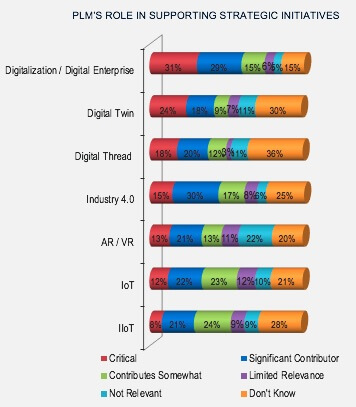 PLM is seen as a major contributor to achieving digital transformation. PLM can provide the digital backbone, providing product context for data. It’s also a contributor to the two less strategically viewed (and understood) initiatives, the Digital Twin and the Digital Thread. PLM can help track product development history, tie data together from step to step, and provide the product details needed to enable a complete digital twin, including revisions and configurations.
PLM Important to Support Industry 4.0
PLM is also a significant contributor to another big priority, Industry 4.0, although it’s identified as more “significant” than “critical.” This is likely because Industry 4.0 requires an ecosystem of solutions including MES (Manufacturing Executing Systems).
IoT and IIoT Leverage PLM as Part of an Ecosystem
IoT and IIoT are very broad initiatives, where PLM can play an important role by providing product information in a much larger context. The data, and experience, shows that IoT requires more than PLM. Supporting these initiatives requires analytics, dashboards, equipment communication, edge computing, ties to other enterprise systems, and more. Many leading PLM vendors have expanded their suites beyond traditional PLM for this reason.
PLM is seen as a major contributor to achieving digital transformation. PLM can provide the digital backbone, providing product context for data. It’s also a contributor to the two less strategically viewed (and understood) initiatives, the Digital Twin and the Digital Thread. PLM can help track product development history, tie data together from step to step, and provide the product details needed to enable a complete digital twin, including revisions and configurations.
PLM Important to Support Industry 4.0
PLM is also a significant contributor to another big priority, Industry 4.0, although it’s identified as more “significant” than “critical.” This is likely because Industry 4.0 requires an ecosystem of solutions including MES (Manufacturing Executing Systems).
IoT and IIoT Leverage PLM as Part of an Ecosystem
IoT and IIoT are very broad initiatives, where PLM can play an important role by providing product information in a much larger context. The data, and experience, shows that IoT requires more than PLM. Supporting these initiatives requires analytics, dashboards, equipment communication, edge computing, ties to other enterprise systems, and more. Many leading PLM vendors have expanded their suites beyond traditional PLM for this reason.
Conclusions and Next Steps
The Manufacturing Industry is in a Revolution The manufacturing industry is changing rapidly and companies have to digitalize or risk losing their market position. Manufacturers are responding, targeting a number of important strategic initiatives related to becoming a digital enterprise. The Digital Transformation Has Begun Digital Transformation is seen as the most critical initiative for the manufacturing industries. Research for this report shows that digital transformation has significant support at the Board level. It’s also a funded initiative that’s more likely to have cross-functional teams executing the program. Industry 4.0 and IoT Initiatives are also frequently viewed as contributors to the corporate business strategy. Although the other initiatives may not have as much executive and enterprise traction, they are also being addressed and play important roles in the overall digital transformation of the company. PLM is a Key Enabler to Support the Digital Revolution PLM plays a key role in supporting digitalization initiatives, serving as the digital innovation backbone. PLM also supports important digital capabilities, including Digital Twin and Digital Thread, which show promise but require some additional education for many companies. PLM is important to the entire Digital Transformation strategy because it provides the product context, history, and details required to support the digital product and manufacturing strategy. Recommended Next Steps Activity level is high, and so are the stakes in terms of impact on business performance. We believe it’s time for manufacturers to review their business strategy, make sure they are educated on these high-level initiatives, and determine how to put these strategies into action. [post_title] => The State of Digitalization in Manufacturing (survey results) [post_excerpt] => [post_status] => publish [comment_status] => open [ping_status] => open [post_password] => [post_name] => state-digitalization [to_ping] => [pinged] => [post_modified] => 2022-11-14 22:28:49 [post_modified_gmt] => 2022-11-15 03:28:49 [post_content_filtered] => [post_parent] => 0 [guid] => https://tech-clarity.com/?p=7325 [menu_order] => 0 [post_type] => post [post_mime_type] => [comment_count] => 0 [filter] => raw ) [18] => WP_Post Object ( [ID] => 7314 [post_author] => 2 [post_date] => 2018-11-12 16:06:31 [post_date_gmt] => 2018-11-12 21:06:31 [post_content] =>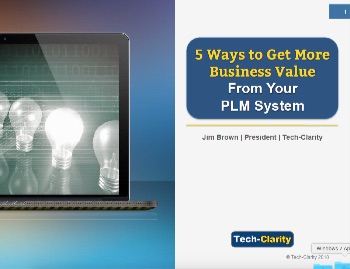 How can manufacturers extend their PLM investments to gain higher levels of business value? The new 5 Ways to Get More Business Value from Your PLM System offers practical approaches for companies to leverage their existing Product Lifecycle Management investment to improve top-line and bottom-line performance, including tips gained from two leading manufacturers.
Please enjoy the summary below. For the full report, please visit our sponsor Razorleaf (no charge, registration required).
How can manufacturers extend their PLM investments to gain higher levels of business value? The new 5 Ways to Get More Business Value from Your PLM System offers practical approaches for companies to leverage their existing Product Lifecycle Management investment to improve top-line and bottom-line performance, including tips gained from two leading manufacturers.
Please enjoy the summary below. For the full report, please visit our sponsor Razorleaf (no charge, registration required).
Has your PLM Value Stalled?
It’s time to re-energize your PLM solution. Most companies start their PLM implementations with high ambitions for strategic business results. Too often they get through the first implementation, typically supporting core Product Data Management (PDM), and stall. Companies like this are missing a golden opportunity. Once the PLM foundation is in place, there’s a lot more than can be done to leverage it for greater value. Our research shows that companies gain significantly higher levels of ROI from supplemental PLM projects than from their initial implementation. “Expanding capabilities is much easier when you have the foundation in place and a community with PLM skills,” offers the manager of a leading transportation equipment manufacturer.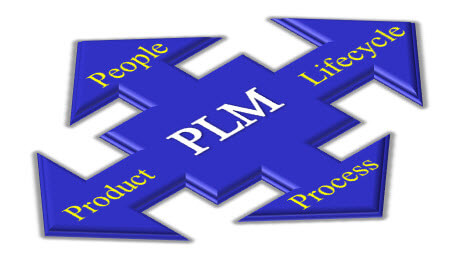
Even if your company has already gone beyond the basics, it’s likely that changes in your business have opened up opportunities that weren’t considered earlier. Beyond that, the manufacturing industry’s shift to the digital enterprise offers compelling new opportunities that can expand PLM value including IoT, Digital Twin, Augmented Reality (AR), and more. There are proven ways to do it. Let’s explore how your company can leverage what you have to do more.
Expanding Your PLM Value
Most companies have a lot more value to extract from PLM. Even if your company has completed all of your planned phases and met your original goals, it’s very likely they could go beyond what they initially expected. Many companies can get more by simply extending what they have. The digital evolution of the manufacturing industry and PLM’s adoption of platform and cloud architectures have unlocked significant new opportunities for business value for those that want to go further. It’s time for companies to start with the business in mind, make sure they’ve locked in the value available from the basics, and then look to achieve more. “Think of it as an ROI driven investment,” advises the manager of the transportation equipment manufacturer. “Don’t just do it because it’s cool, have a vision for where you want to go and how the tools will get you there. Do the evaluation to make sure it’s worthwhile for the business. Keep improving so you don’t become stagnant.” PLM helps companies manage complexity, improve productivity, and reduce cost. But PLM can do more, enabling top-line growth and margin expansion. It’s also important to recognize that digitalization is changing the market landscape. PLM can provide the foundation to support IoT and other transformational initiatives that may significantly change your company’s value proposition and competitive standing. It’s time to get started. [post_title] => 5 Ways to Get More Business Value from PLM [post_excerpt] => [post_status] => publish [comment_status] => open [ping_status] => open [post_password] => [post_name] => more-from-plm [to_ping] => [pinged] => [post_modified] => 2022-11-14 22:27:53 [post_modified_gmt] => 2022-11-15 03:27:53 [post_content_filtered] => [post_parent] => 0 [guid] => https://tech-clarity.com/?p=7314 [menu_order] => 0 [post_type] => post [post_mime_type] => [comment_count] => 0 [filter] => raw ) [19] => WP_Post Object ( [ID] => 7303 [post_author] => 2572 [post_date] => 2018-11-01 13:57:03 [post_date_gmt] => 2018-11-01 17:57:03 [post_content] => If you are in the medical device industry, are you prepared for the EU MDR?In this on-demand webcast, Tech-Clarity's Michelle Boucher interviews Caroline Byrd, regulatory expert at Abbott, about the steps Abbott has taken to prepare product data for EU MDR compliance. They discuss:
- Significant changes between the MDD and MDR
- How to prioritize the work required to ensure you have the product data to comply with the EU MDR
- Key roles and responsibilities to define to support the compliance efforts
- The role of technology, including PLM, to create a digital thread that will support complete submissions
 [post_title] => EU MDR: How Abbott is Getting Their Digital House In Order (webcast)
[post_excerpt] =>
[post_status] => publish
[comment_status] => open
[ping_status] => open
[post_password] =>
[post_name] => eu-mdr-abbott-digital-webcast
[to_ping] =>
[pinged] =>
[post_modified] => 2022-11-14 22:26:58
[post_modified_gmt] => 2022-11-15 03:26:58
[post_content_filtered] =>
[post_parent] => 0
[guid] => https://tech-clarity.com/?p=7303
[menu_order] => 0
[post_type] => post
[post_mime_type] =>
[comment_count] => 0
[filter] => raw
)
)
[post_count] => 20
[current_post] => -1
[before_loop] => 1
[in_the_loop] =>
[post] => WP_Post Object
(
[ID] => 7799
[post_author] => 2572
[post_date] => 2019-05-01 14:32:36
[post_date_gmt] => 2019-05-01 18:32:36
[post_content] =>
[post_title] => EU MDR: How Abbott is Getting Their Digital House In Order (webcast)
[post_excerpt] =>
[post_status] => publish
[comment_status] => open
[ping_status] => open
[post_password] =>
[post_name] => eu-mdr-abbott-digital-webcast
[to_ping] =>
[pinged] =>
[post_modified] => 2022-11-14 22:26:58
[post_modified_gmt] => 2022-11-15 03:26:58
[post_content_filtered] =>
[post_parent] => 0
[guid] => https://tech-clarity.com/?p=7303
[menu_order] => 0
[post_type] => post
[post_mime_type] =>
[comment_count] => 0
[filter] => raw
)
)
[post_count] => 20
[current_post] => -1
[before_loop] => 1
[in_the_loop] =>
[post] => WP_Post Object
(
[ID] => 7799
[post_author] => 2572
[post_date] => 2019-05-01 14:32:36
[post_date_gmt] => 2019-05-01 18:32:36
[post_content] => 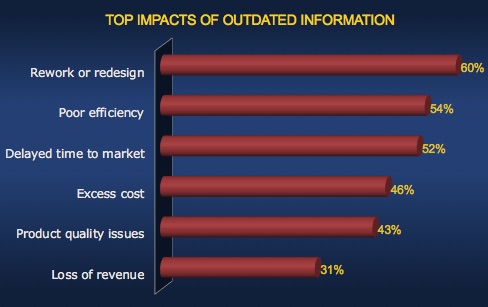 Imagine what you could do if you could get almost a third of your time back? In a guest post on the Sodius Willert blog, Michelle Boucher shares research on how much engineering time is wasted on non-value added work and explains what you can do.
Imagine what you could do if you could get almost a third of your time back? In a guest post on the Sodius Willert blog, Michelle Boucher shares research on how much engineering time is wasted on non-value added work and explains what you can do.
Focus on the Work You Enjoy
As an engineer, what gets you excited about your job? For most, it’s getting to work on really cool projects and innovating. Unfortunately, a good chunk of your time is wasted on other things, taking you away from the work you enjoy doing and the work that adds value for your company.How Do You Limit Non-Value Added Work?
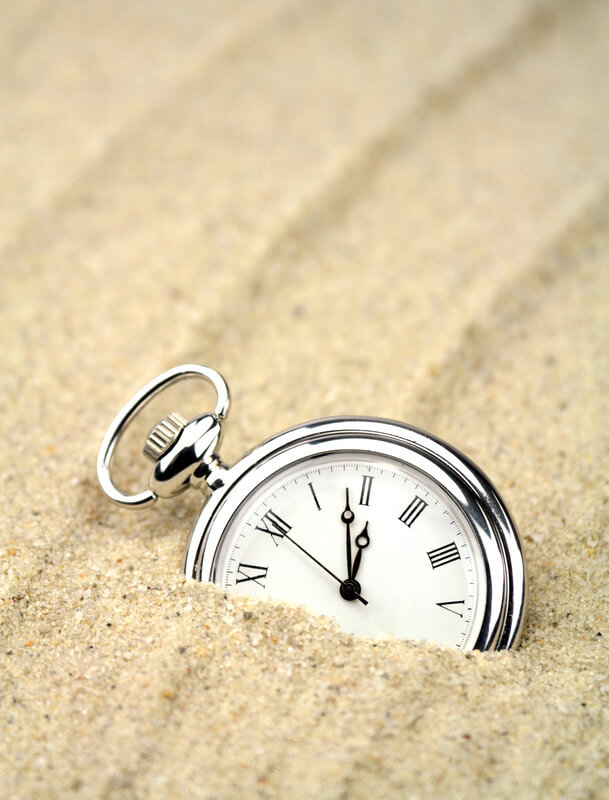 Research from Tech-Clarity’s Reducing Non-Value Added Work in Engineering reveals that engineers waste a startling 32% on non-value added work. That’s a lot of lost opportunity. Imagine what you could do if you could get almost a third of your time back? Much of this non-value added work is related to the many manual tasks associated with managing, sharing, and finding data. Data tends to be stored in multiple places, so there is no single source of truth.
Without a single source of truth, there is no traceability across the data. It then becomes practically impossible to identify the impact of an update to requirements, new design work, or changes to other parts of the design. Without traceability, changes can not automatically propagate across all product data. Instead, changes and updates become a very manual, if not impossible, process to identify everything that is impacted and update it. This is further complicated if the same data is located in multiple places. The situation creates a significant risk for outdated and conflicting data. Unfortunately, this costs the company in numerous ways, which we will explore further.
Research from Tech-Clarity’s Reducing Non-Value Added Work in Engineering reveals that engineers waste a startling 32% on non-value added work. That’s a lot of lost opportunity. Imagine what you could do if you could get almost a third of your time back? Much of this non-value added work is related to the many manual tasks associated with managing, sharing, and finding data. Data tends to be stored in multiple places, so there is no single source of truth.
Without a single source of truth, there is no traceability across the data. It then becomes practically impossible to identify the impact of an update to requirements, new design work, or changes to other parts of the design. Without traceability, changes can not automatically propagate across all product data. Instead, changes and updates become a very manual, if not impossible, process to identify everything that is impacted and update it. This is further complicated if the same data is located in multiple places. The situation creates a significant risk for outdated and conflicting data. Unfortunately, this costs the company in numerous ways, which we will explore further.
The Cost of Outdated Information
When design work is based on outdated information, error will be inevitable. These errors result in costly rework and redesign. Wasting even more time to correct these problems means poor efficiency which can delay time to market. As the design nears completion, there are fewer options to fix problems, so errors become much more expensive and time consuming to fix. Plus, with limited options, solutions may be less than ideal, which will hurt product quality or drive up cost. Of course, if problems are missed entirely, there will be even bigger quality problems in the field. The combination of poor quality, higher cost, and late to market all hurt competitiveness which can reduce revenue opportunities. This problem gets even worse when multiple engineering disciplines are involved. When products integrate mechanical components, electronics, and embedded software, there are inherent silos. Continue to the Sodius Willert blog for the full post. [post_title] => How to Avoid Non-Value Added Work for Engineers (guest post) [post_excerpt] => [post_status] => publish [comment_status] => open [ping_status] => open [post_password] => [post_name] => non-value-added-work [to_ping] => [pinged] => [post_modified] => 2022-11-14 22:25:36 [post_modified_gmt] => 2022-11-15 03:25:36 [post_content_filtered] => [post_parent] => 0 [guid] => https://tech-clarity.com/?p=7799 [menu_order] => 0 [post_type] => post [post_mime_type] => [comment_count] => 0 [filter] => raw ) [comment_count] => 0 [current_comment] => -1 [found_posts] => 802 [max_num_pages] => 41 [max_num_comment_pages] => 0 [is_single] => [is_preview] => [is_page] => [is_archive] => [is_date] => [is_year] => [is_month] => [is_day] => [is_time] => [is_author] => [is_category] => [is_tag] => [is_tax] => [is_search] => [is_feed] => [is_comment_feed] => [is_trackback] => [is_home] => 1 [is_privacy_policy] => [is_404] => [is_embed] => [is_paged] => [is_admin] => [is_attachment] => [is_singular] => [is_robots] => [is_favicon] => [is_posts_page] => [is_post_type_archive] => [query_vars_hash:WP_Query:private] => 832198e3d4df22490074cdc6dbb84e28 [query_vars_changed:WP_Query:private] => 1 [thumbnails_cached] => [allow_query_attachment_by_filename:protected] => [stopwords:WP_Query:private] => [compat_fields:WP_Query:private] => Array ( [0] => query_vars_hash [1] => query_vars_changed ) [compat_methods:WP_Query:private] => Array ( [0] => init_query_flags [1] => parse_tax_query ) [query_cache_key:WP_Query:private] => wp_query:deabea618612ac1715b441c5f8b3c637:0.50437000 17665511800.51350000 1766551180 )All Results for "All"
Retail Analytics Buyer’s Guide (eBook)
How do you navigate complex, omnichannel environments and manage multiple sources of data to make the best decisions? Can predictive analytics help? Tech-Clarity’s Retail Analytics Buyer’s Guide explains how predictive analytics provide better visibility across your retail business so that you can make better decisions to become more competitive. As the retail industry faces significant…
The Renaissance of CAD
As our changing world impacts product design, how should CAD evolve? How can CAD support your efforts to adopt some of the latest technologies? During the PTC on-demand virtual session, “The Renaissance of CAD: What’s New, What’s Now & What You Can Do With It” you will hear about some of the latest advancements in…
IoT, Industrial IoT, and Digital Twins in Food & Beverage Production (animation)
How can food and beverage companies use digitalization to dramatically increase flexibility, enhance consumer responsiveness, and improve productivity? This episode of Tech-Clarity TV, Revolutionizing Food and Beverage Production with the Industrial IoT and the Digital Twin, shares how food producers can leverage digital twins and the IoT to improve performance. This video series is sponsored…
Ten Practices to Successfully Implement Technology (eBook)
How can you get the quickest return on your investments in technology? As we look ahead to the coming decade, technology will become increasingly critical for your company to stay competitive. New technology can include CAD, CAE, PLM, 3D printing, IoT, and more. However, for that technology to work for your business, your implementation must…
Why Not Adopt Cloud for Product Innovation and Engineering? (guest post)
How have manufacturers’ opinions on using the cloud to support product innovation, product development, and engineering changed? How does that impact cloud adoption? Read the guest post in full in the Digital Transformation section of the Siemens PLM Community blog. Jim Brown recently shared a guest post on the Siemens’ blog offering our experience on…
Revolutionizing Simulation For Design Engineers
How do you empower engineers to design the best products possible? Research from Tech-Clarity’s Revolutionizing Simulation For Design Engineers research report finds that design engineers lack confidence in design decisions 28% of the time. The research identifies the most common ways engineers deal with this uncertainty, its impact, and how to improve confidence. This research…
IoT Medical Device Monitoring (Buyer’s Guide)
What should Life Sciences companies look for in a solution to help them simultaneously improve profitability and patient outcomes using remote device monitoring via the IoT? Our new Improving Service Performance and Patient Outcomes with Remote Monitoring Buyer’s Guide helps Life Sciences companies understand the business and social value of monitoring equipment with the IoT….
Preparing for EU MDR (eBook)
Are you ready for the EU MDR? Tech-Clarity’s Preparing for EU MDR explains the impact of the EU MDR on your product data. While complying to the EU MDR may require an investment, taking the steps now to prepare your product data will not only support EU MDR compliance, but will position your company to…
Top Ten Signs You’ve Outgrown Your PDM System (webcast)
How can manufacturers tell when they’ve outgrown their Product Data Management system? What should they look for to replace it? Join Tech-Clarity’s Jim Brown and PTC‘s Mark Lobo as they help companies navigate this all-too-common scenario. The interactive presentation will share what’s missing in most basic PDM / Engineering Document Management (EDM) systems and what…
Remote Monitoring Solution Selection for Medical Device Service (webcast)
What should Life Sciences Companies look for in a solution to transform service using IoT remote monitoring? Tech-Clarity’s Jim Brown and PTC’s Anthony Moffa will share recent research and industry experience on this Medical Design & Outsourcing webcast, How to Select a Remote Monitoring Solution to Transform Your Service Model. The webcast will cover how…
How to Futureproof Your Product Design (survey results)
Is your CAD tool ready for the 2020s? Does it have the features you need to keep your company competitive? Tech-Clarity’s How to Futureproof Your Product Design: 5 Technologies Your CAD Tool Must Support describes the key technologies that will impact design in the 2020s. Based on a survey of over 200 manufacturers, respondents identified…
The Value of Immersive 3D Automotive Experiences (eBook)
How are innovative automotive companies leveraging immersive, real-time 3D to improve innovation? How can they use highly realistic, interactive, virtual experiences to enhance design, engineering, manufacturing engineering, sales, marketing, training, and more? This eBook shares industry insights and experiences from Ford, Audi, Teague, Team One / Saatchi & Saatchi, and other manufacturers to shed light…
Better Requirements Management to Save Your Bottom Line (Webcast)
Does your company excel at meeting and managing product requirements? If not, this webinar will help you develop better requirements management practices. During this on-demand webinar, Tech-Clarity’s Michelle Boucher and Anshuman Prakash from Siemens share perspectives on better requirements management. They also provide advice to make the process easier. During the webinar, you will learn:…
Better Requirements Management: An Immediate Payback (Guest Post)
Did you know that 9.9% of every dollar spent on projects is wasted due to poor project performance? This startling statistic comes from research done by the Project Management Institute (PMI), published in their 2018 Pulse of the Profession® report. In a guest post on the Siemens Solid Edge blog, Michelle Boucher outlines some key reasons why…
5 Frustrations of Working with Contract Manufacturers (guest post)
What challenges do manufacturers encounter when working with contract manufacturers? What should they do to reduce the frustration and streamline the relationship? Jim Brown introduces five questions you may find yourself asking if you’re working with a CMO, CDMO, or other supply chain partners and then offers recommendations based on our experience and research in…
Expanding Beyond Your Outgrown PDM System (Buyer’s Guide)
What should manufacturers look for when it’s time to replace their outgrown PDM system? Our research shows a high correlation between elevated business performance and strong product data management capabilities. Unfortunately, we find many manufacturers have already stretched the limits of what their basic Product Data Management (PDM) system can do. In most cases, it meets…
The State of Digitalization in Manufacturing (survey results)
Manufacturing is going through a significant, digital transformation that’s disrupting the industry status quo. Companies are investing in digital transformation, smart manufacturing, Industry 4.0, Internet of Things (IoT), and other related initiatives. What are they prioritizing? And, what are they actually taking action on? Tech-Clarity surveyed over 130 manufacturers to find out. The report analyzes…
5 Ways to Get More Business Value from PLM
How can manufacturers extend their PLM investments to gain higher levels of business value? The new 5 Ways to Get More Business Value from Your PLM System offers practical approaches for companies to leverage their existing Product Lifecycle Management investment to improve top-line and bottom-line performance, including tips gained from two leading manufacturers. Please enjoy…
EU MDR: How Abbott is Getting Their Digital House In Order (webcast)
If you are in the medical device industry, are you prepared for the EU MDR? In this on-demand webcast, Tech-Clarity’s Michelle Boucher interviews Caroline Byrd, regulatory expert at Abbott, about the steps Abbott has taken to prepare product data for EU MDR compliance. They discuss: Significant changes between the MDD and MDR How to prioritize…
